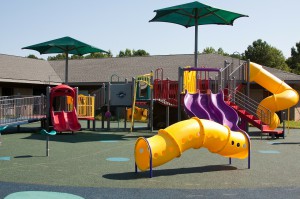Blog


The Life of a School Nurse
Nurses have been part of the school setting since the late 1800’s when they provided student inspections to identify those with communicable diseases who needed treatment.
The primary role of a school nurse is to support student learning by promoting student and staff health and safety. Rather than list all the duties of a school nurse, we thought we’d share “A Day In The Life of the School Nurse” from personal accounts of working nurses.
7:30 a.m. School has not yet started and there are four students and one parent waiting to see me. His daughter suffered a serious injury over the weekend and underwent emergency surgery to repair her radial artery. She needs a pass for someone to carry her books from room to room and can get Tylenol for pain. The remaining three are waiting for their morning dose of Ritalin (they will get another dose along with the remaining 63 students at noon). All long-term medications need permission slips signed by both the physician and parent and all medications are counted both by the parent and school nurse to ensure safety.
8:05 a.m. The next student had just gotten off the bus and become ill. She said that she wasn’t feeling well before school or the night before. She told me that her mom suggested she try to go to school and if she felt sick to come to the nurse and call her. Unfortunately, her mother had just left for work and it took another 90 minutes before she was able to pick up her ill child. It often takes three to five phone calls to locate a parent or caregiver.
 900 a.m. You have seen 10 more students with complaints from stomachaches to bruises from falls and jammed fingers from playing. You apply ice to those in need, check those with stomach complaints and convince them they are okay to return to class.
900 a.m. You have seen 10 more students with complaints from stomachaches to bruises from falls and jammed fingers from playing. You apply ice to those in need, check those with stomach complaints and convince them they are okay to return to class.
9:30 a.m. You receive a call that a cafeteria worker is short of breath and complaining of chest pains. Leaving the student with a part-time nurse you are lucky enough to have, you race to the cafeteria where after assessing the situation, call 911 and the employee’s family. You wait with the employee until EMT arrives and transports to the local hospital.
10:00 a.m. You have a scheduled meeting with teachers and parents of a student newly diagnosed ADDH, to discuss medicine and procedures.
10:45 a.m. Students start to arrive for their daily medications. You have at a minimum 55 students who take daily medication, and this does not count inhalers.
11:45 a.m. You try to sneak away for a 15 minute lunch break, but a child has fallen and hurt her leg on the playground. You grab the wheelchair and some ice. She has turned her ankle, you treat her and bring her back to the infirmary to await pick up by her parents.
12:15 p.m. Your lunchtime pill call begins and the child with the injured arm comes and says it feesl funny. You feel no radial pulse and immediately call her father to call the surgeon. He picks her up and you learn later that she underwent a second surgery. Your alertness probably saved her arm.
12:30-1:30 p.m. You see a parade of students from sore throats to toothaches and stomach pains. You minister to each student with care, reassuring them and noting treatment in their files.
1:45 p.m. A special needs student needs help with personal grooming. You take this opportunity to teach her about proper hygiene practices.
As the day winds down a bit, you catch up on paperwork and realize you have seen 43 students and four faculty in addition to your usual morning and noontime medication dispenses.
Being a school nurse is challenging, exciting and busy. As a school nurse, you perform trauma triage, post-operative monitoring, basic hygiene education, medicine dispensing, mothering and the monitoring of chronic conditions of both students and staff.
At Barco’s Nightingales Foundation, we applaud all those dedicated to keeping school children safe and healthy throughout the school year.
~Michael and Frida Donner
